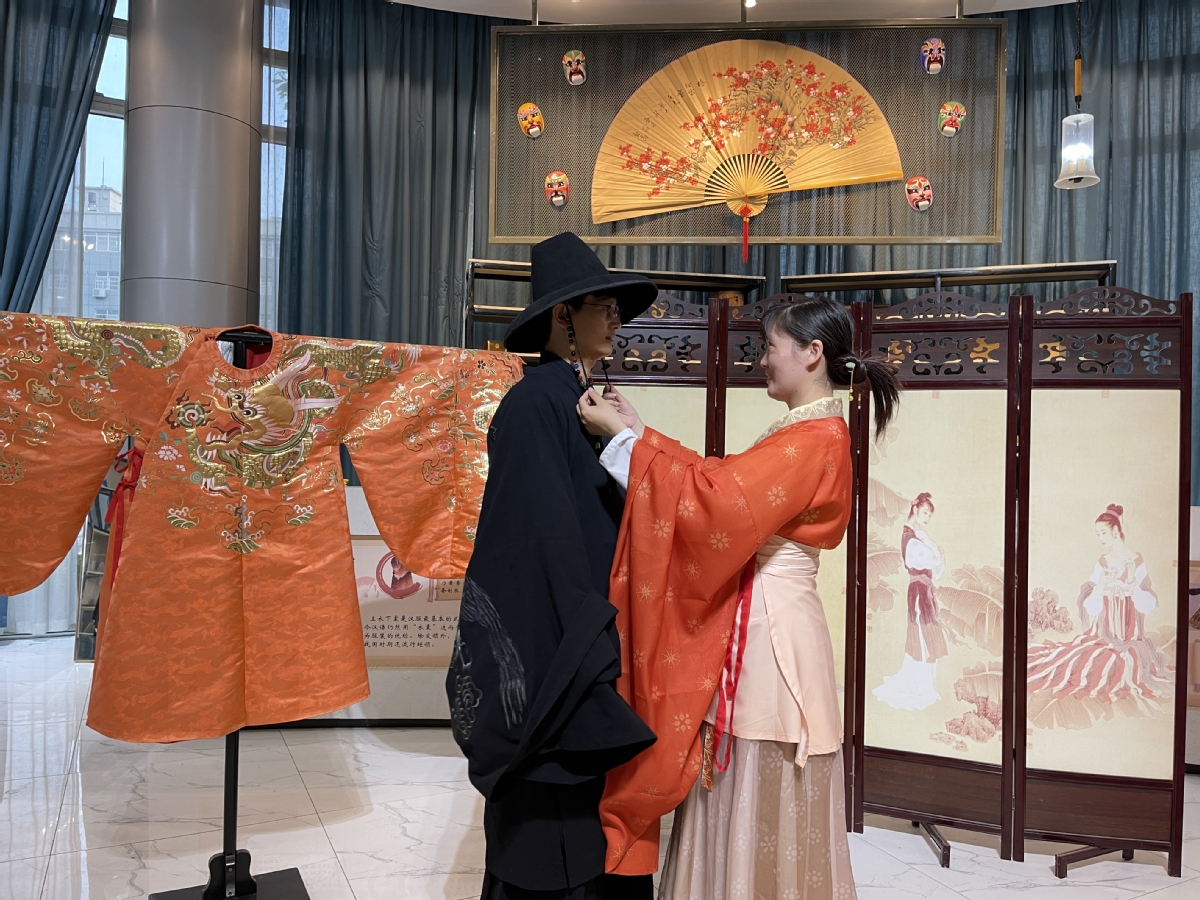

Traditional Chinese attire that incorporates stylish modern designs is becoming popular among consumers this year, driven by the younger generation's fondness for the country's cultural heritage, and thereby fueling more business opportunities for retailers.
During the Spring Festival holiday in February, various traditional Chinese-style outfits containing dragon and phoenix elements became quite the rage among young consumers, as such clothing integrates Chinese design elements into various kinds of daily wear.
In Chinese traditional astrology, which outlines the qualities of 12 zodiac signs, the Year of the Dragon is usually of great significance, as the dragon symbolizes strength, wisdom and good fortune for Chinese people. This has spurred the popularity of traditional Chinese elements.
In addition, an increasing number of Chinese celebrities have frequently chosen locally designed traditional Chinese outfits, encouraging young consumers to wear such garments.
Since the beginning of this year, online search volumes for Tang suits and hanfu, two kinds of traditional Chinese-style attire, have skyrocketed.
Horse-faced skirts, or mid-length skirts with a distinguishing pleated design, have become the most popular item in the hanfu category, according to Alibaba's e-commerce platform Taobao.
This type of skirt is a key component of hanfu, the traditional dress worn by Han Chinese women.
During the Nov 11 online shopping extravaganza last year, more than 730,000 pieces of horse-faced skirts were sold on Taobao.
Meanwhile, more young parents have bought traditional-style Chinese clothing for their children, especially girls. In January, the turnover of children's clothing in the Tang suit style surged more than 330 percent year-on-year, according to Taobao.
"The booming sales growth of traditional Chinese-style clothing comes from young consumers' sense of identification with traditional Chinese culture, which also indicates a rise in national confidence," said Li Lina, director of women's clothing at Taobao.
"Such cultural confidence has fueled more business opportunities for retailers, and the main challenge for designers and retailers lies in how to integrate traditional costumes with different modern scenes," Li added.